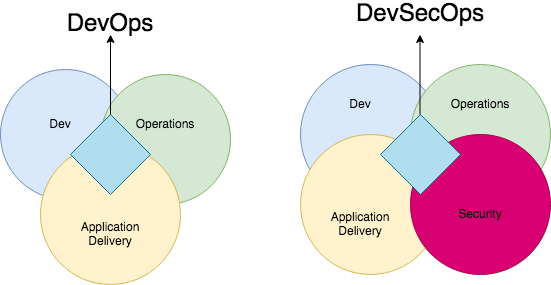DevSecOps– What does it mean ?
Security should be thought of from the start of application development instead of as an add-on which in turn reduces your vulnerabilities.
There have been phenomenal changes in the IT Infrastructure with cloud computing, managed services, provisioning, etc. This leads to speed, cost optimization, and agility and improves the application development process. The main mantra is to make everyone accountable for security with the objective of implementing security decisions and actions at the same scale and speed as development and operations decisions.
The ability to deploy applications in the cloud has improved both scale and speed, and the move to agile and DevOps methodologies like continuous delivery makes application launches a thing of the past. In particular, DevOps — the principle of integrating development and IT operations under a single ceiling has helped with everything from more frequent releases to an increase in stability.
Yet many security and compliance monitoring tools have not kept up with this pace of change, as they simply weren’t built to test code at the speed DevOps requires. This has only solidified the view that security is the biggest blocker to rapid application development.

How does it work
To make it simple- Enhanced automation throughout the software delivery pipeline eliminates mistakes and reduces attacks and downtime. For teams looking to integrate security into their DevOps framework, the process can be completed seamlessly using the right DevSecOps tools and processes.
Let’s take a look at a typical workflow:
- Creating code in Version control management system.
- The changes are committed
- Developer retrieves the code from the version control management system and carries out analysis of the static code to identify any security defects or bugs in code quality.
- An environment is created using an infrastructure-as-code tool, such as Chef.
- The application is deployed and security configurations are applied to the system.
- A test automation suite is then executed against the newly deployed application, including back-end, UI, integration, security tests and API.
- If the application passes these tests, it is deployed to a production environment.
- This new production environment is monitored continuously to identify any active security threats to the system.
The need ..
Alignment of development and operations teams through DevOps has made it possible to build customized software and business applications in a far quicker time.
Though organizations are increasingly focused on breaking down the traditional silos between the development, testing, and operations teams, many of them haven’t been integrating security into their development process, becoming susceptible to the risk of threats and vulnerabilities.
Here is where DevSecOps comes in. The approach includes incorporating security as a major component of DevOps practices. Through continuous monitoring, assessment, and analysis, DevSecOps ensures that any loopholes and weaknesses are identified early in the development process and remediated immediately.
Making security an equal consideration alongside development and operations is a must for any organization involved in application development and distribution. When you integrate DevSecOps and DevOps, every developer and network administrator has security at the front of their mind when developing and deploying applications.







